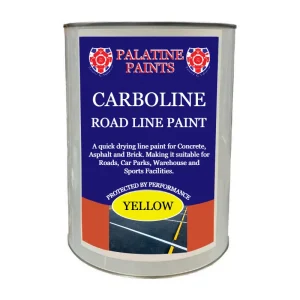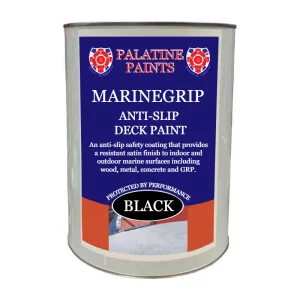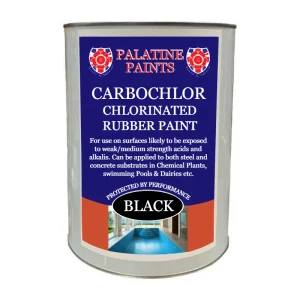All Blogs
Making a Splash: Our Guide to Choosing and Applying the Perfect Swimming Pool Paint
Applying the Perfect Swimming Pool Paint
Summer is here and there’s no better way to beat the heat than taking a refreshing dip in your very own swimming pool. But before you can enjoy the cool water, it’s important to make sure your pool is in good condition. One vital aspect of pool maintenance is choosing the right paint for your pool. The paint not only needs to be durable and long-lasting, it also needs to look great and complement your backyard oasis. That’s why we’ve created the ultimate guide to choosing and applying the perfect swimming pool paint. Whether you’re a DIY enthusiast or you prefer to leave it to the professionals, read on to learn everything you need to know to make a splash this summer with a beautifully painted swimming pool.
The Importance of Choosing the Right Swimming Pool Paint
Choosing the right swimming pool paint is crucial for maintaining the longevity and aesthetics of your pool. The paint protects the surface of your pool from damage caused by chemicals, UV rays, and water. It also helps to keep the water clean and prevent algae growth by creating a smooth surface that is easy to clean. Additionally, the color of your pool paint can complement the overall design of your backyard and enhance the beauty of your outdoor space.
Types of Swimming Pool Paint
There are three main types of swimming pool paint: epoxy, rubber, and acrylic. Each type has its own set of advantages and disadvantages, which we will discuss in detail below.
Epoxy Paint
Epoxy paint is a popular choice for swimming pool owners because of its durability and longevity. It is a two-part paint that consists of a resin and a hardener that are mixed together before application. Once applied, the paint forms a hard, waterproof surface that can withstand harsh chemicals and UV rays. Epoxy paint also has the added benefit of being resistant to algae growth and stains.
However, there are some drawbacks to using epoxy paint. It can be difficult to apply and requires a lot of preparation before painting. Epoxy paint also tends to be more expensive than other types of pool paint.
Rubber Paint
Rubber paint, also known as chlorinated rubber paint, is a popular choice for those who want a more affordable option. It is easy to apply and dries quickly, making it a great choice for DIY enthusiasts. Rubber paint is also resistant to chemicals and UV rays, and can last up to five years before needing to be reapplied.
Acrylic Paint
Acrylic paint is a great choice for those who want a paint that is easy to apply and has a quick drying time. It is also resistant to chemicals and UV rays, and can last up to five years before needing to be reapplied. Acrylic paint is also available in a wide range of colors, making it a great choice for those who want to customize the look of their pool.
One disadvantage of acrylic paint is that it is not as durable as epoxy paint and may need to be reapplied more frequently. It is also not as resistant to algae growth and stains.
Highly Rated Chlorinated rubber paint
- Ideal as a swimming pool or pond paint
- For painting areas where hygiene is essential, such as livestock areas, kennels and stables
- For areas where water and chemical resistance is crucial
- Suitable for steel, concrete, road surfaces, manhole covers etc
Factors to Consider When Choosing Swimming Pool Paint
When choosing swimming pool paint, there are several factors to consider. These include coloUr, durability, and compatibility.
Colour
The colour of your swimming pool paint is an important consideration because it can affect the overall look of your backyard. Lighter colours can make your pool look larger and more inviting, while darker colours can create a more dramatic effect. It’s important to choose a colour that complements the design of your outdoor space and reflects your personal style.
We have over 30 colours to choose from, you’re able to make your swimming pool look exactly the way you like!
Durability
Durability is another important factor to consider when choosing swimming pool paint. You want a paint that can withstand the harsh chemicals and UV rays that come with maintaining a pool.
Compatibility
It’s important to choose a swimming pool paint that is compatible with the surface of your pool. Some types of paint may not adhere properly to certain surfaces, which can result in peeling and chipping. It’s always a good idea to consult with a professional to ensure that you are using the right type of paint for your pool.
Preparing Your Swimming Pool for Painting
Before you can paint your swimming pool, you need to prepare the surface. This involves cleaning the pool thoroughly and repairing any cracks or chips. Here are the steps to follow:
- Drain the pool completely.
- Clean the pool using a pool cleaner or a pressure washer. Be sure to remove any debris, algae, or dirt from the surface.
- Use a wire brush or sandpaper to remove any loose paint or rust from the surface of the pool.
- Repair any cracks or chips using a pool patching compound. Allow the compound to dry completely before proceeding.
- Apply a pool primer to the surface of the pool. This will help the paint adhere better and provide a smoother finish.
Steps for Applying Swimming Pool Paint
Once you have prepared your swimming pool, you can start applying the paint. Here are the steps to follow:
- Mix the paint according to the manufacturer’s instructions.
- Use a roller or a sprayer to apply the paint to the surface of the pool. Be sure to work in small sections and apply the paint evenly.
- Allow the first coat of paint to dry completely before applying a second coat. Most types of pool paint require two coats for optimal coverage.
- Allow the second coat of paint to dry completely before filling the pool with water.
Tips for Applying Swimming Pool Paint for a Professional Finish
If you want your swimming pool paint job to look professional, here are some tips to follow:
- Use a high-quality paintbrush or roller to ensure an even application of paint.
- Work in small sections to ensure that the paint does not dry before you have a chance to spread it evenly.
- Use a sprayer for hard-to-reach areas, such as corners and crevices.
- Apply the paint in thin, even layers to avoid drips and runs.
- Don’t rush the process. Allow each coat of paint to dry completely before applying the next one.
Maintaining Your Swimming Pool Paint – Cleaning and Touch-Ups
Maintaining your swimming pool paint is important for keeping your pool looking great and extending the life of the paint. Here are some tips for cleaning and touch-ups:
- Use a soft-bristled brush or sponge to clean the surface of the pool regularly. This will help to remove any dirt or debris that can damage the paint.
- Use a pool vacuum to remove any debris that has settled on the bottom of the pool.
- Touch up any areas of the pool that have chipped or peeled using a small brush and the same type of paint.
Frequently Asked Questions About Swimming Pool Paint
Here are some frequently asked questions about swimming pool paint:
Q: How long does swimming pool paint last?
A: The lifespan of swimming pool paint depends on the type of paint used and how well it is maintained. Generally, epoxy paint can last up to 10 years, while rubber and acrylic paints can last up to five years.
Q: Can I paint my pool myself?
A: Yes, you can paint your pool yourself if you have the right tools and knowledge. However, it’s always a good idea to consult with a professional to ensure that you are using the right type of paint and following the correct application process.
Q: Can I change the color of my pool paint?
A: Yes, you can change the color of your pool paint. However, it’s important to choose a paint that is compatible with the existing paint and surface of your pool.
Conclusion
Choosing and applying the perfect swimming pool paint can make a big difference in the look and longevity of your pool. By considering factors like color, durability, and compatibility, you can choose a paint that complements your backyard oasis and provides a long-lasting finish. Whether you choose to DIY or hire a professional, following the steps outlined in this guide can help you achieve a beautiful and functional swimming pool that you can enjoy for years to come.
Contacting us is easy!
Email: [email protected]
Call Us: 01942 884 122
Contact form: https://www.palatinepaints.co.uk/contact-us
Live Chat Service: Press the small blue icon at the bottom left of your screen.


